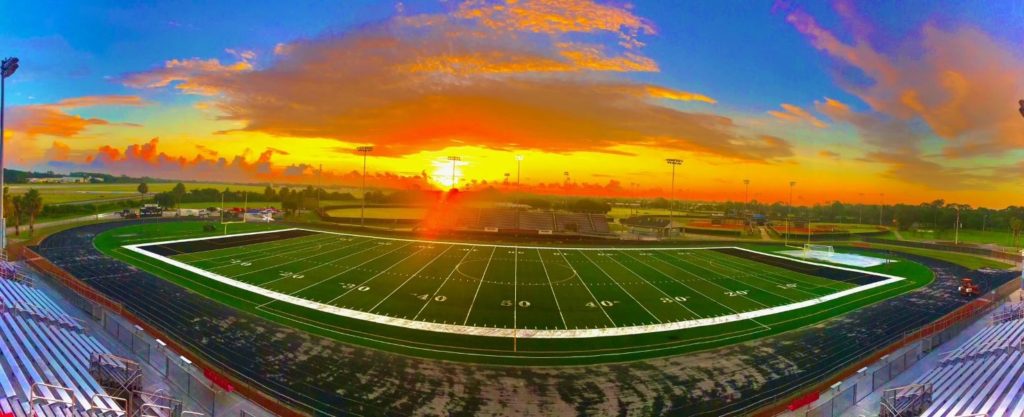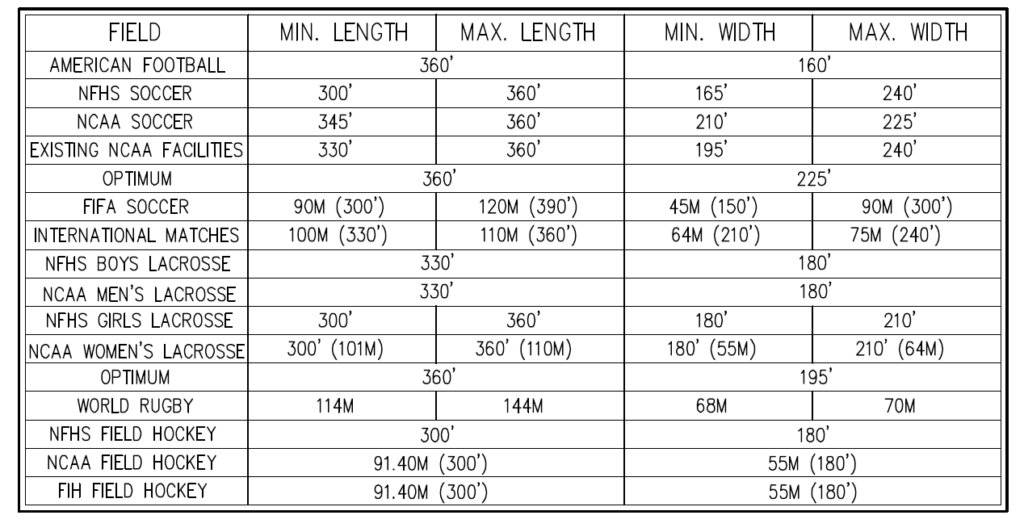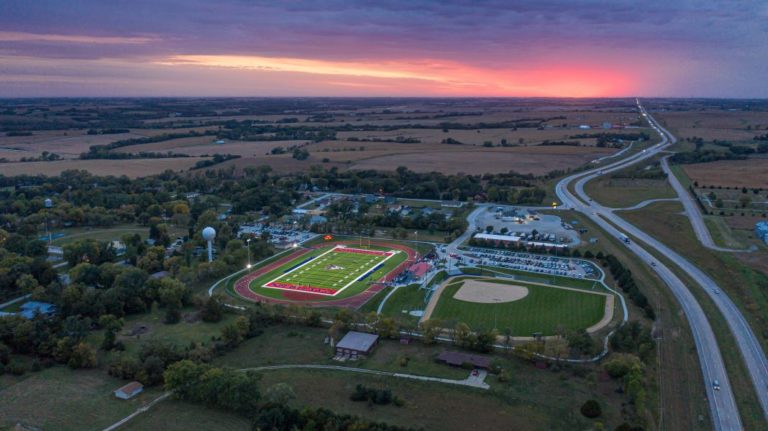By Mary Helen Sprecher
The roar of the crowd. The glare of the lights. The unrelenting, nail-biting excitement of blueprints and the drawing board.
And yes, that was sarcasm. Building a football field starts with designing a football field – which admittedly is far less exciting than watching the players run onto it. The planning process, however, is what sets a football facility up for success. So, here are some things to take into consideration as you enter into that process – which, of course, leads to groundbreaking – which everyone loves.
Location
Has a specific location been designated, or are several sites under consideration? Are those sites suitable for construction and shovel-ready? Will utilities be needed, or are they already present?
Complexity of the project
Is this a field only, or will it be a part of an overall stadium? If it is an open field, will it include lighting, or is lighting already present? Will there be fixed seating, are there portable bleachers that will be brought in prior to games, or will people simply bring their own folding chairs? Will the field be fenced off so that it can be secured when not in use? Where are the closest restrooms?
If the field will be in a stadium, what are some of the other aspects of the project that are important to the owner? (Options might include irrigation systems, concession stands, a high-tech scoreboard, Wi-Fi capabilities, a press box and other amenities.) Will a running track encircle the field?
The relative complexity of the project will drive the type of, and composition of, the planning team (more on this in a minute).

Surface
Quite a bit has been written already on the choice between natural grass and synthetic turf – and that discussion could easily take up this entire article. The decision of surface will necessarily have to be made prior to field design and construction. In addition to the field owner (who knows and understands the budget for the project and who may have specific preferences), decisions should be made in conjunction with following:
- The field manager (who will be able to discuss maintenance capabilities).
- A qualified sports field contractor (who will have a knowledge of soil conditions and drainage, as well as an understanding of the best types of grass or synthetic turf to use – and who can also help take into consideration any other uses planned).
- A design professional (who can address various issues in planning)
- Representatives of user groups (coaches and athletic directors) who can discuss the sports to be played and the relative needs of the athletes playing those sports.
While the surface of the field is a decision on which everyone (and we do mean everyone) will want input, having too large of a committee will keep anything from being accomplished. Communicate openly with community members who want to know about the project, but remember that, in general, the whole community will not be designing, building, maintaining, playing on, or paying for the field. The most important input will come from those who will be doing those five things.
Field size
A typical football field is 160 feet wide and 360 feet long. That makes it one of the longest of the rectangular fields – but not necessarily the widest. The diagram below, taken from the book Sports Fields: A Construction and Maintenance Manual, breaks down the minimum and maximum recommended dimensions for the more popular field sports. Some sports have minimum and maximum dimensions, while others (like football) list only one width and length.

Sports to be played on the field
Some fields may be kept solely for use by the football team, or they may be used by other sports as well. This too will drive the planning, design and construction processes – and, down the line, the maintenance of the field as well. As communities have become increasingly landlocked with tighter budgets, there has been a corresponding uptick in the need for fields to host more than one sport.
Start by considering the dimensions. Sports, particularly at the high school level, that require a wider (though not necessarily longer) field than football include lacrosse, field hockey and soccer. That means if your field is going to be hosting more one or more of these sports, in addition to football, it will have to be designed to meet the standards for those sports as well.
As a result of a field hosting, for example, soccer, which has a width of between 165 feet and 240 feet, seating areas will be set back farther than they would for a football-only field. Remember that overruns and other clearance needs will have to be taken into consideration. Also, discuss with your contractor the sports to be hosted and their seasonal schedule.
Field drainage
This is one of the less interesting, but most vital, aspects of the planning process – and nowhere is it more evident than in football, which has a specific schedule. A field will not be usable if it can’t shed water efficiently after a rain. No matter whether the final choice of surface is natural grass or synthetic turf, do not skimp on drainage. A sports-specific contractor can discuss the options available and make recommendations.
“Do your research and ask an expert,” said John Schedler of Bakara Sport.
Marking and lining fields
If a field is expected to host more than one sport, and if some of those sports will be played in the same season, the surface of the field will have to be marked for those types of play.
Many governing bodies specify the width and color of playing lines, and it may be that more than one will specify the same color and line width. Reserve the line color with the highest contrast for the sport that will be played most often; for example, white for football – and then to put the lines for the second-most popular sport in a different, but also contrasting color, such as yellow.
While it is possible to use a third contrasting color, such as red, silver or purple for another sport, builders recommend that managers mark additional playing areas with cones or temporary lines, since too many markings can spell confusion for officials and athletes.
For more information on the design, construction and care of sports fields, the book Sports Fields: A Construction and Maintenance Manual, contains user-friendly but in-depth information that leads the reader through the decision-making process.
Mary Helen Sprecher wrote this article on behalf of the American Sports Builders Association (www.sportsbuilders.org), the national organization for builders, design professionals and suppliers of materials for sports fields, running tracks, tennis courts and indoor and outdoor courts and recreational facilities.

